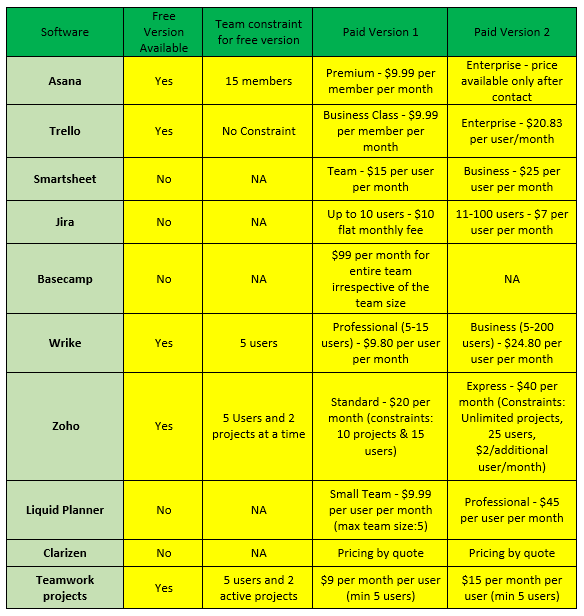
Keep documentation of everything to ensure there is an audit trail for any requirement changesĪdditional tips for project management success. Hold a requirements review and approval meeting to have stakeholders sign-off on requirements. Conduct requirement gathering sessions with key stakeholders, including the end-users of the final project output. Have a clear scope statement, with constraints identified. Have clearly defined project objectives, goals, and outcomes. To reduce the risk of gathering the wrong requirements, consider the following tips: If your company has a portfolio manager, they can also ensure this happens. A change in the organization’s prioritiesĪn engaged sponsor and frequent communication help ensure the organization’s priorities and the project’s objectives stay aligned. Avoiding scope creep or uncontrolled changes to a project’s scopeĪccording to the same survey, there are also three primary reasons that projects fail:. Investing in actively engaged executive sponsors. BEST WAY TO MANAGE PROJECTS DRIVERS
To manage a project effectively, you should also be aware of the following statistics:Īccording to PMI’s 2018 Pulse Survey, the top three drivers of project success are: Following these 49 processes will give you a proven structure for managing any project, which will increase your likelihood of success.
 Project closure: At this point, your project has completed its objectives (or failed), and closure processes are implemented to close out and wrap on the project.Īs of the sixth edition of the PMBOK (Project Management Book of Knowledge), there are a total of 49 processes that fall within these five groups. It includes processes for controlling the scope, schedule, and budget. Project monitoring & control: This phase overlaps the others and includes all the processes for making sure the project follows the plan.
Project closure: At this point, your project has completed its objectives (or failed), and closure processes are implemented to close out and wrap on the project.Īs of the sixth edition of the PMBOK (Project Management Book of Knowledge), there are a total of 49 processes that fall within these five groups. It includes processes for controlling the scope, schedule, and budget. Project monitoring & control: This phase overlaps the others and includes all the processes for making sure the project follows the plan. 
It also includes managing communications, quality, and your project team.
Project execution: This is the phase where the actual work will occur. Any project manager will tell you the success of your project comes down to how well you plan. The bulk of project management processes fall within this group. Project planning: During this phase, you plan all of the work of the project, including what has to be done, how it will be done, when it will be done, who will do it, and how you will monitor and control the whole thing. The project charter is created in this phase. Project initiation: This is where an idea gets approved to become a project. 
There are five process groups used to manage projects. However, the best way to manage a project successfully is to break it down into manageable phases and tasks, and to follow proven project management processes. Even small projects can be complex, with lots of moving parts. Managing a project can seem overwhelming for a new project manager.







 0 kommentar(er)
0 kommentar(er)
